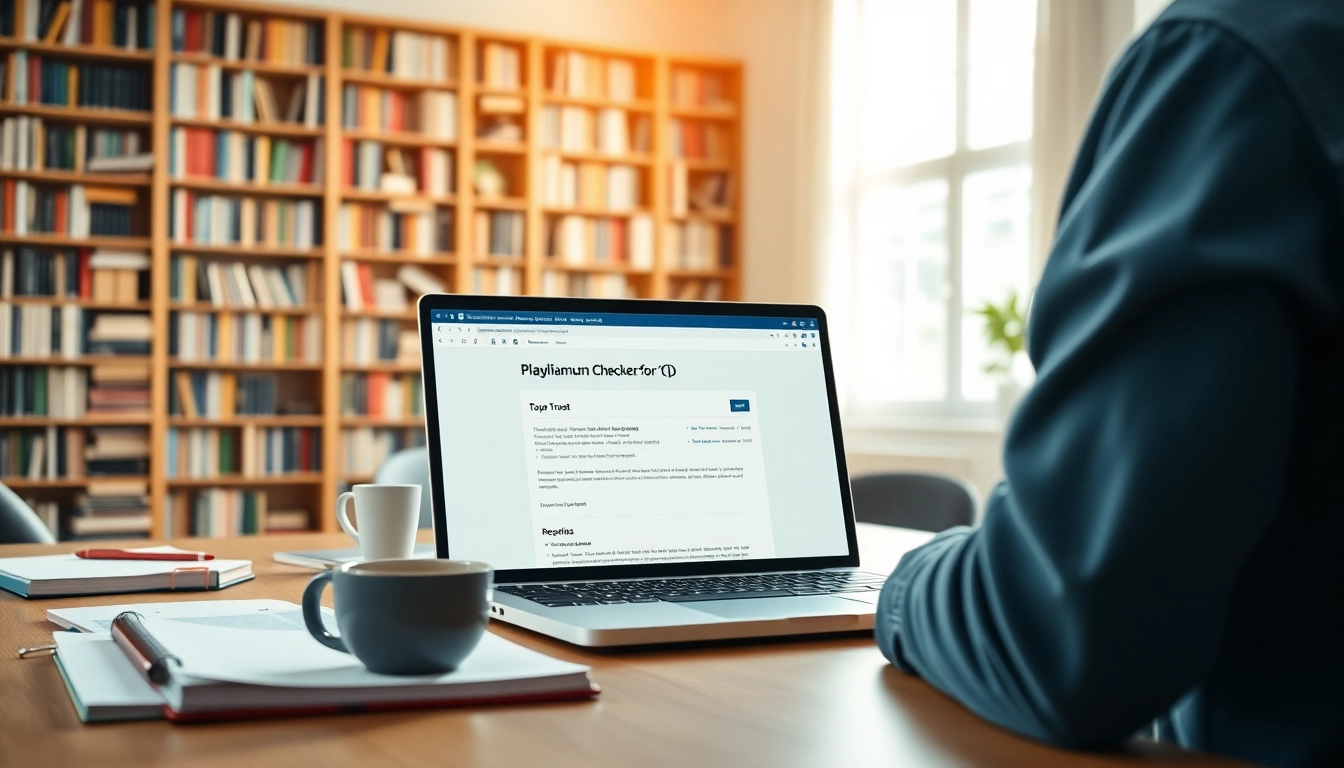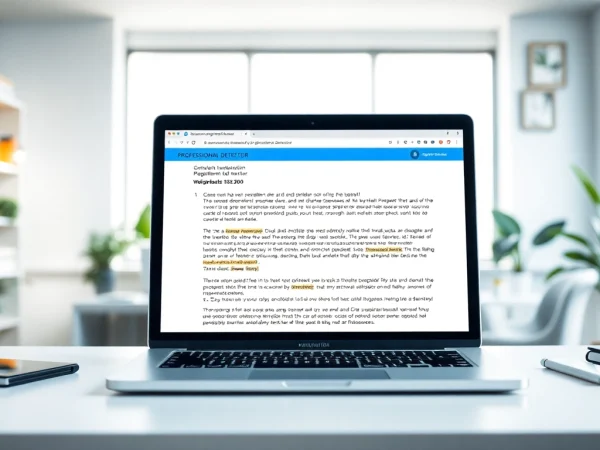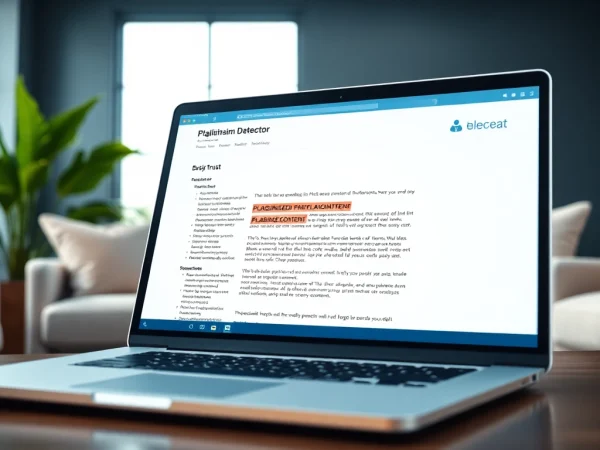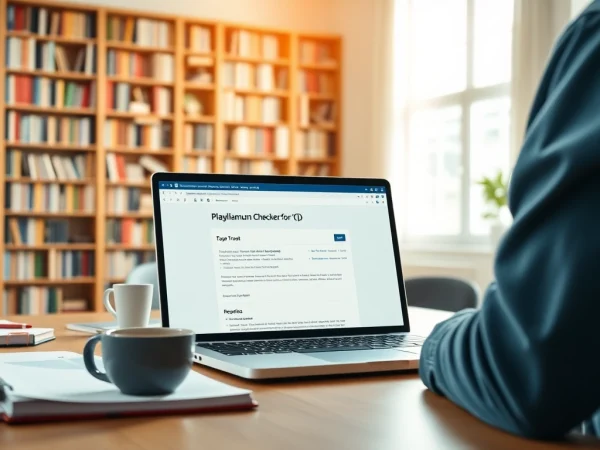Enhancing Academic Integrity with an Effective Plagiarism Checker Tool
Understanding Plagiarism: What You Need to Know
Definition of Plagiarism
Plagiarism is the act of using someone else’s work, ideas, or intellectual property without proper attribution, claiming them as your own. This unethical practice can occur in various forms, from copying text directly to paraphrasing ideas without acknowledging the original source. The implications of plagiarism extend beyond academic integrity; it can affect careers, reputations, and even legal standing.
Types of Plagiarism
Understanding the different types of plagiarism is crucial for writers, students, and academics alike. The following are the most common types:
- Direct Plagiarism: Copying text word-for-word from a source without citation.
- Self-Plagiarism: Reusing one’s own previously published work without acknowledgment.
- Patchwork Plagiarism: Piecing together ideas or phrases from multiple sources without crediting the original authors.
- Accidental Plagiarism: Unintentional failure to cite sources properly, often due to negligence or misunderstanding.
- Paraphrasing Plagiarism: Rephrasing someone else’s ideas without giving due credit.
Consequences of Plagiarism
The consequences of plagiarism can be severe. In academic settings, students may face penalties ranging from failing grades to expulsion. For professionals, plagiarism can damage reputation, result in loss of job, or even lead to legal action. Additionally, academic dishonesty undermines the credibility of research and education, posing a broader threat to societal knowledge.
The Importance of a Plagiarism Checker
Why Use a Plagiarism Checker?
A plagiarism checker serves as a vital tool for ensuring the originality of written work. By comparing texts against a vast database of sources, these tools help identify instances of plagiarism, enabling authors to rectify their work before submission. They also serve as a safeguard for academic institutions, ensuring a level playing field in assessments.
Benefits for Students and Writers
The benefits of using a plagiarism checker are manifold. Students can avoid academic penalties, maintain their integrity, and develop good writing habits. Writers can protect their intellectual property and ensure their original ideas are recognized and properly attributed. Moreover, these tools facilitate better research practices by encouraging thorough referencing and citation skills.
Comparing Manual Checks with Software
While manual checks—reading through a piece to catch potential plagiarism—are beneficial to some extent, they are often time-consuming and inefficient. Automated plagiarism checkers are faster and can analyze millions of documents instantaneously. They provide comprehensive reports that outline similarities with existing publications, enabling users to pinpoint potential issues quickly.
How to Choose the Right Plagiarism Checker
Key Features to Look For
When selecting a plagiarism checker, users should consider several factors:
- Database Size: A larger database increases the likelihood of detecting potential matches with existing texts.
- Accuracy and Reliability: The tool should provide accurate reports with a minimal rate of false positives.
- Ease of Use: A user-friendly interface enhances the checking experience.
- Detailed Reports: Look for tools that offer in-depth analysis with clear citations of the sources.
- Integration Capabilities: Some plagiarism checkers can be integrated into existing writing tools and platforms.
Top Recommendations for Plagiarism Checkers
Several plagiarism checkers stand out for their reliability, features, and user satisfaction:
- Grammarly: Known for its grammar-checking capabilities, it also contains a robust plagiarism checker.
- PapersOwl: Offers a user-friendly interface and detailed reports, ideal for students.
- Scribbr: Utilizes advanced algorithms similar to those employed in academic institutions.
- Turnitin: Widely used in educational settings for its thorough analysis.
- Copyscape: Primarily utilized by website owners to check for duplicate content across the internet.
Cost vs. Functionality Analysis
When evaluating plagiarism checkers, it’s essential to balance cost with functionality. Free tools may offer basic checking, but for thorough analysis, paid services might be necessary. Consider your specific needs, such as the volume of text to check, whether you need advanced features, and where you’ll be using the tool (student assignments vs. professional writing).
How to Effectively Use a Plagiarism Checker
Step-by-Step Guide to Running a Check
Using a plagiarism checker is generally straightforward. Follow this simple guide:
- Sign up/Log in: Create an account with your chosen plagiarism checker if required.
- Upload/Copy-Paste Your Document: Import the document you wish to check or paste the text directly into the tool.
- Run the Check: Click the check button and wait for the tool to scan for similarities.
- Review the Report: Examine the findings, noting any sections highlighted as plagiarized.
- Edit as Needed: Make necessary revisions to ensure proper attribution and originality.
Understanding the Results and Metrics
After running a plagiarism check, you will receive a report that includes several key metrics, such as:
- Overall Similarity Score: A percentage indicating how much of your text matches other sources.
- Highlighted Text: Sections of your writing that have been flagged for potential plagiarism.
- Source List: A list of documents and sources that match your text.
Carefully analyze these results to determine if changes are necessary to ensure originality before submitting or publishing your work.
Common Mistakes to Avoid
While using plagiarism checkers, avoid these common pitfalls:
- Over-reliance on Tools: Always combine the tool’s findings with your own review for nuanced understanding.
- Ignoring Feedback: Use the feedback provided by the report to improve your work actively.
- Submitting Without Revision: Never submit your document without addressing flagged issues.
Future Trends in Plagiarism Checking
AI and Its Impact on Plagiarism Detection
Artificial Intelligence (AI) is revolutionizing the landscape of plagiarism detection. Modern tools utilize machine learning algorithms to improve accuracy and efficiency. AI can identify more complex types of plagiarism, including context and paraphrasing, making it easier for users to ensure originality.
Emerging Technologies
Alongside AI, new technologies are enhancing plagiarism detection capabilities. Natural language processing (NLP) is being integrated into plagiarism checkers to understand the nuances of language better and identify similarities beyond mere text matching. This evolution will empower writers to craft original content while still benefiting from existing knowledge.
Best Practices for Maintaining Academic Integrity
Maintaining academic integrity is paramount in education and professional writing. Here are some best practices:
- Educate Yourself: Understand what constitutes plagiarism and how to avoid it.
- Use Citations Correctly: Familiarize yourself with the appropriate citation style for your field.
- Regularly Use Plagiarism Checkers: Make it a habit to check your work before submission to catch any inadvertent mistakes.










